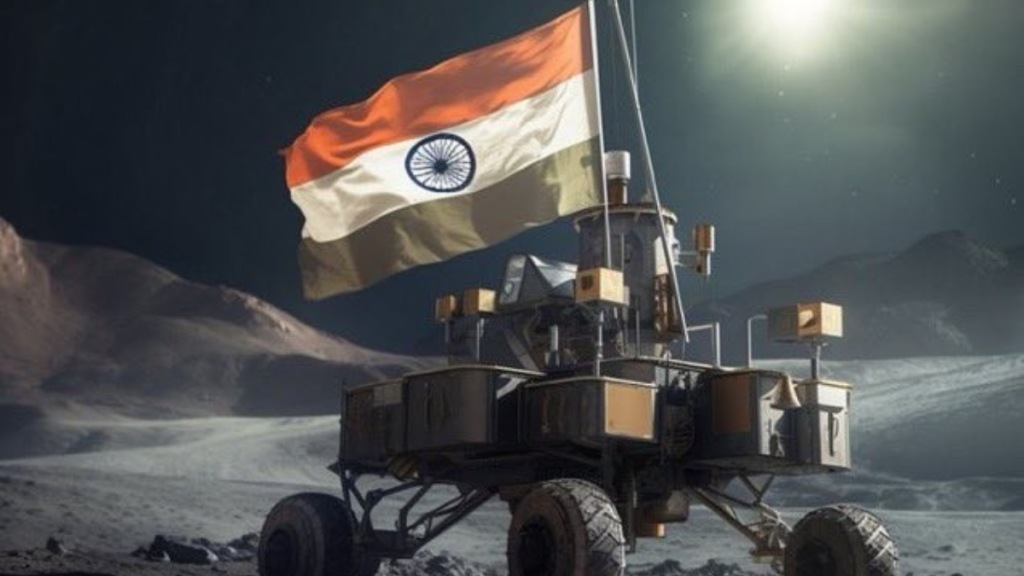India’s space journey has reached remarkable heights, driven by the nation’s vision to become a global leader in space exploration. From the successful Chandrayaan-3 mission, which made history by landing near the moon’s south pole, to the upcoming Chandrayaan-4, focused on collecting samples from the lunar surface, the country’s space capabilities have expanded significantly. This momentum has been bolstered by government policies that prioritize technological self-reliance, private sector participation, and international collaboration.
India has made tremendous strides in space technology, including plans for an independent Indian space station by 2035 and a crewed mission to the moon by 2040. The government’s initiative to enhance ISRO’s capabilities and encourage private sector involvement has set the stage for India’s continued growth in space exploration.
Notably, India’s recent accomplishments in space exploration have caught the attention of the global community. The Chandrayaan-3 mission, which marked India’s first successful landing near the moon’s south pole, was a historic achievement for the country. Following this success, the Chandrayaan-4 mission will further demonstrate India’s capabilities in lunar exploration by collecting samples from the moon’s icy regions.
One of the standout features of India’s space policy is its emphasis on inclusivity, both in terms of technological innovation and the opportunities available to its youth. The “Atmanirbhar Bharat” (Self-Reliant India) initiative has propelled the country toward greater indigenous production of space technology. This includes satellites, rockets, and advanced space research equipment. The establishment of entities like NewSpace India Limited (NSIL) and the Indian National Space Promotion and Authorization Center (IN-SPACe) has encouraged the private sector to play a more active role in space missions, creating a competitive environment for technological advancements.
The focus on inclusivity is also reflected in initiatives aimed at empowering youth, particularly those from underserved communities. SpaceKidz India, an aerospace startup has emerged as a leader in this area, inspiring and educating young minds in space science and technology. Founded with the mission of providing hands-on space education, SpaceKidz India has helped over a million students, particularly from rural areas and tier-2 towns, to engage in space-related projects. The organization has become the only Indian entity to have designed and successfully launched 27 missions, including 18+ Nano Satellites and 5 Orbital Satellites.
Their most notable achievement was the creation of KalamSAT, the world’s lightest nano-satellite, which was launched by NASA.
Dr Srimathy Kesan, the founder of SpaceKidz India, explains, “SpaceKidz India provides hands-on experience to students, allowing them to design, build, and launch payloads and spacecraft. Our outreach has reached tier-2 towns across India, where students typically have limited access to advanced technology. It inspires a new generation to engage in scientific research and innovation.”
The organization’s focus on gender inclusivity has been one of its most significant contributions. The AzaadiSAT mission, launched in August 2022 to mark India’s 75th Independence anniversary, involved 750 girls from across the country. This mission aimed to inspire young women to pursue STEM careers, aligning with PM Modi’s vision of creating an inclusive and diverse space ecosystem. The satellite, launched on ISRO’s Small Satellite Launch Vehicle, carried radiation sensors and communication equipment, marking a milestone in promoting gender equality in the space industry.
ShakthiSAT mission
SpaceKidz India’s latest initiative, the ShakthiSAT mission, exemplifies the country’s growing influence in global space cooperation. Through ShakthiSAT, SpaceKidz India is working to train 12,000 girls from 108 countries in space technology. The program includes a 120-hour online training course on space technology, after which one representative from each country will be selected to travel to India for hands-on experience in building of the “Spacecraft to be launched into Lunar Orbit”. This global initiative not only promotes gender-inclusive education but also fosters international collaboration in space exploration. With participants from countries like Nigeria, Guyana, and Brazil, the program strengthens India’s diplomatic ties and demonstrates the country’s commitment to creating a collaborative, inclusive space ecosystem.
PM Heads to Nigeria, Brazil & Guyana
In the coming days, as Prime Minister Modi prepares to visit Nigeria, Brazil, and Guyana, space cooperation will top the agenda. These visits reflect India’s dedication to fostering international partnerships, particularly in space exploration. The discussions will center around sharing best practices, knowledge exchange, and collaborative space missions. The visits align with Modi’s vision of India as a global partner in space, one that leads through innovation, inclusivity, and mutual growth.
ShakthiSAT brings together 108 countries, including ambassadors like Ms. Isadora Stefanhak Costa Arantes from Brazil, Brazil’s first female astronaut candidate and NASA Ambassador for Astrobiology, and Mrs Temitope Adeniyi from Nigeria, an award-winning doctoral researcher specializing in quantum technology and AI at Cleveland State University. In two days, a woman leader from Guyana will join as an ambassador, further expanding the reach of this initiative.
Dr Kesan adds, “Vasudhaiva Kutumbakkam, the world is one, is the ideology that our Prime Minister emphasizes, and we at SpaceKidz India align with this belief. Our work in bringing together 108 countries through ShakthiSAT exemplifies our commitment to fostering international collaboration and gender-inclusive STEM education.”

